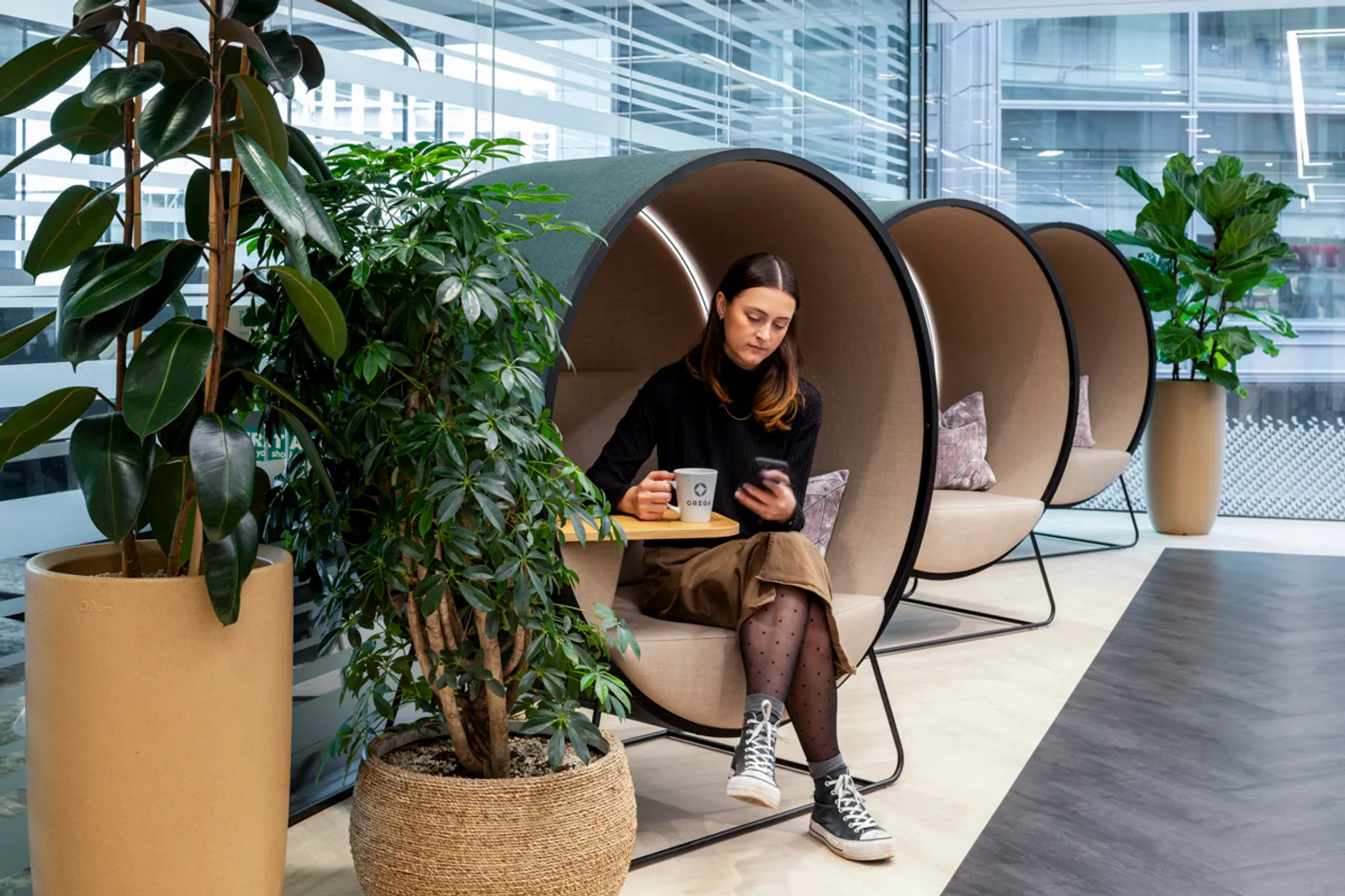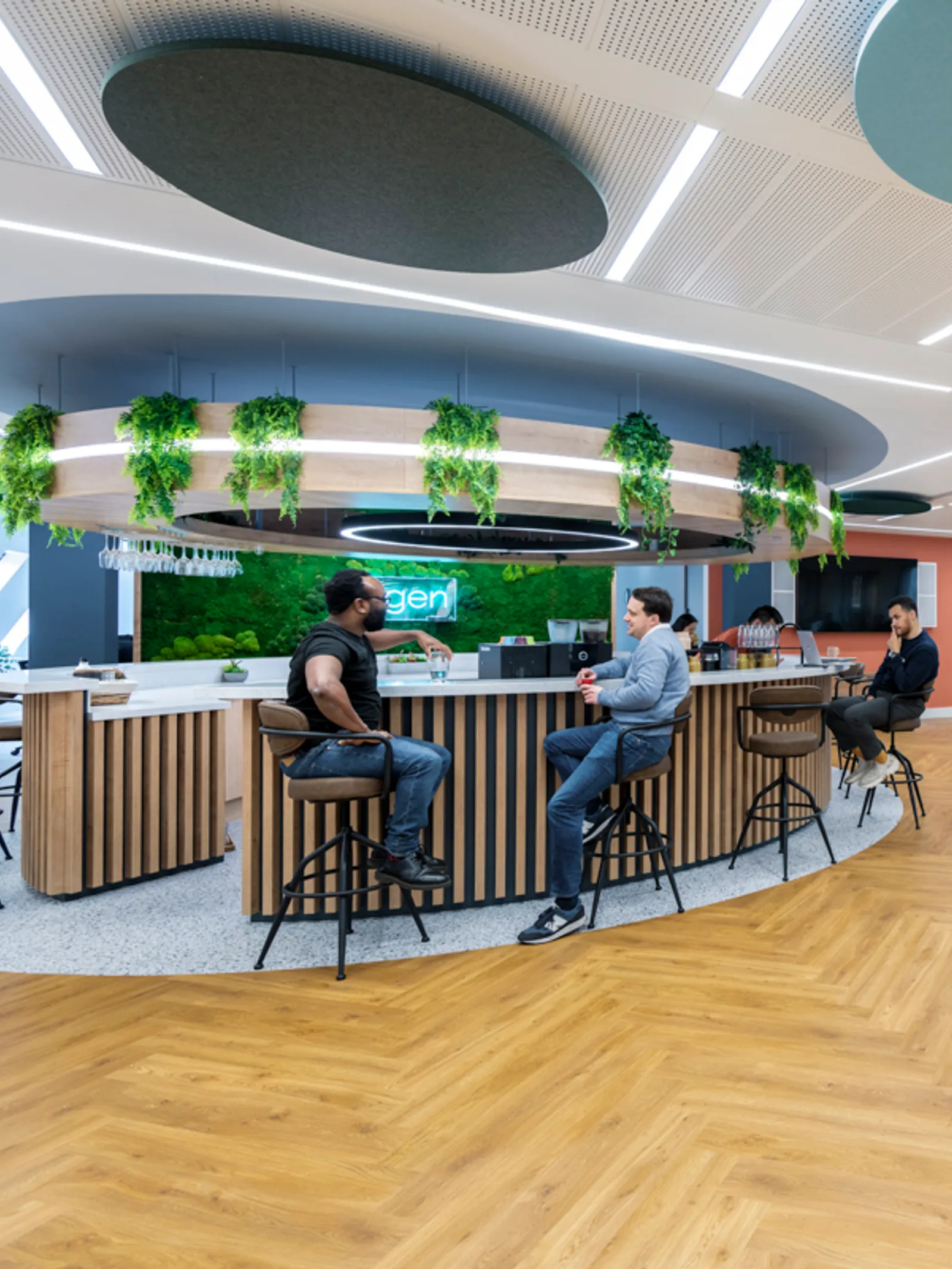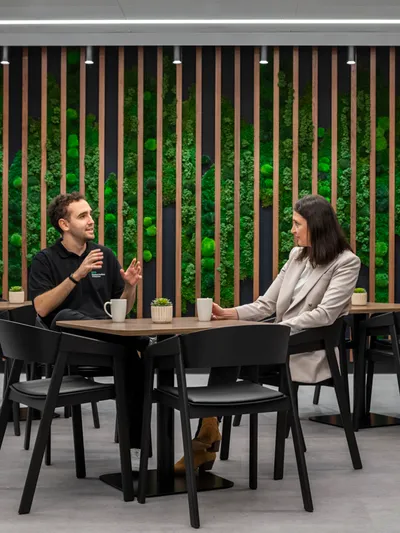During Clerkenwell Design Week 2025, our Design Director Enrique Soler joined a panel hosted by the Journal of Biophilic Design, alongside voices from Green Grads and Acou.Space, to explore one of the most urgent themes in our industry today: regenerative design.
Held at the final event of the festival, the discussion focused on how the design world is evolving beyond traditional sustainability – pushing toward spaces that actively improve the natural world.
Here, we break down the key themes from the discussion and share how Enrique sees regenerative thinking transforming workplace design.
From Sustainability to Regeneration: A New Mindset for Design
The panel opened with a big question: is sustainable design enough anymore? For many designers, the answer is increasingly no. While sustainability focused on reducing harm, regenerative design asks how we can go further – designing buildings and spaces that actively give back.
This distinction became a defining thread throughout the discussion. As Enrique explained, regenerative design represents a fundamental mindset shift – one that redefines success in the built environment.
“Sustainability was about doing less damage. Then we moved to doing no damage. Now, we need to talk about doing good – adding positive value to the planet, communities, and the spaces we shape.”
For Enrique, regenerative design is about designing with purpose and legacy. It’s about being, as he powerfully put it, "a good ancestor" – thinking beyond current users and considering how future generations will benefit from what we create today.

Biophilic Design: More Than Just Greenery
The conversation then turned to biophilic design – a popular term in recent years, but often misunderstood or oversimplified. While many associate it with adding plants to interiors, the panel made clear that true biophilia goes far deeper.
It’s a framework that helps us connect people with nature through materiality, light, spatial rhythm, and sensory experience. For Enrique, biophilic design is an essential building block in creating regenerative spaces.
“Biophilia isn’t a final flourish – it’s an approach that should be embedded from the very first design conversation. It's a hypothesis, a mindset, and a tool for long-term impact.”
He challenged designers to view biophilia not as decoration, but as a core design principle – one that, when embraced early, contributes directly to wellbeing, resilience, and regeneration in the workplace.
Material Choices and Lifecycle Thinking
No conversation about regenerative design is complete without talking about materials -– and this panel went well beyond just “recycled vs. new.” The conversation explored the entire lifecycle of materials, from source to disassembly.
As interest grows in circular economy principles, Enrique raised important questions around how designers and clients can better assess the long-term impact of what they specify.
“Where does it come from? Is it living? Is it from waste? What happens to it after? Is it recyclable? Biodegradable? Can it be disassembled and reused?”
While using recycled materials is a positive step, Enrique pointed out that context is everything. If a material can’t be reused, or if it's bonded with something toxic, it can still end up as waste. True regenerative design considers how materials behave throughout and beyond a project’s lifecycle.
In a separate panel hosted by Material Source, Enrique highlighted the need for greater transparency in material supply chains:
“Sometimes we don’t know what’s in the materials we specify – we need better transparency and labelling from suppliers.”
It’s a call for accountability, not just innovation – and a reminder that regenerative design depends on the wider ecosystem, not just the designer.
Designing Systems, Not Just Spaces
The discussion shifted from individual materials to the systems and processes that shape the built environment. Regeneration, the panel agreed, isn't about one-off decisions – it’s about creating integrated systems that support sustainability at every level.
Enrique echoed this, emphasising that design teams need to consider how everything works together – from product sourcing to installation, usage, and eventual reuse.
“It's not just the material – it's the system around it. How is it made, installed, used, and re-used? Are we designing with the full lifecycle in mind?”
Speaking at the Material Source event, Enrique expanded on this idea by highlighting the role of data and digital tools in managing complexity:
“The current linear model doesn’t work. It creates a mess at the end of a project lifecycle. Technology can help us track and measure what goes in – and comes out – of spaces more effectively.”
This systems-based approach is something the Area design team brings to every project -– not only evaluating what goes into the space, but how that space can evolve, adapt, and minimise impact long-term.

In the final part of the discussion, the panel focused on legacy. How can today’s design decisions benefit not just the next project, but the next generation?
For Enrique, this question cuts to the heart of regenerative thinking. A truly forward-thinking workplace isn’t just one that meets current needs – it’s one that continues to add value over time.
“Regenerative design means thinking not just about our current users, but about what future generations will inherit. It’s about enriching lives today – and tomorrow.”
Whether it’s through adaptable design, ethical sourcing, or inclusive spaces, Enrique believes that every workplace project should be an investment in the future, not just a solution for now.
These discussions made one thing clear: regenerative design is no longer an emerging trend – it’s a vital evolution of how we think, design, and build.
Want to explore how regenerative design can elevate your workplace? Get in touch with our team today.




